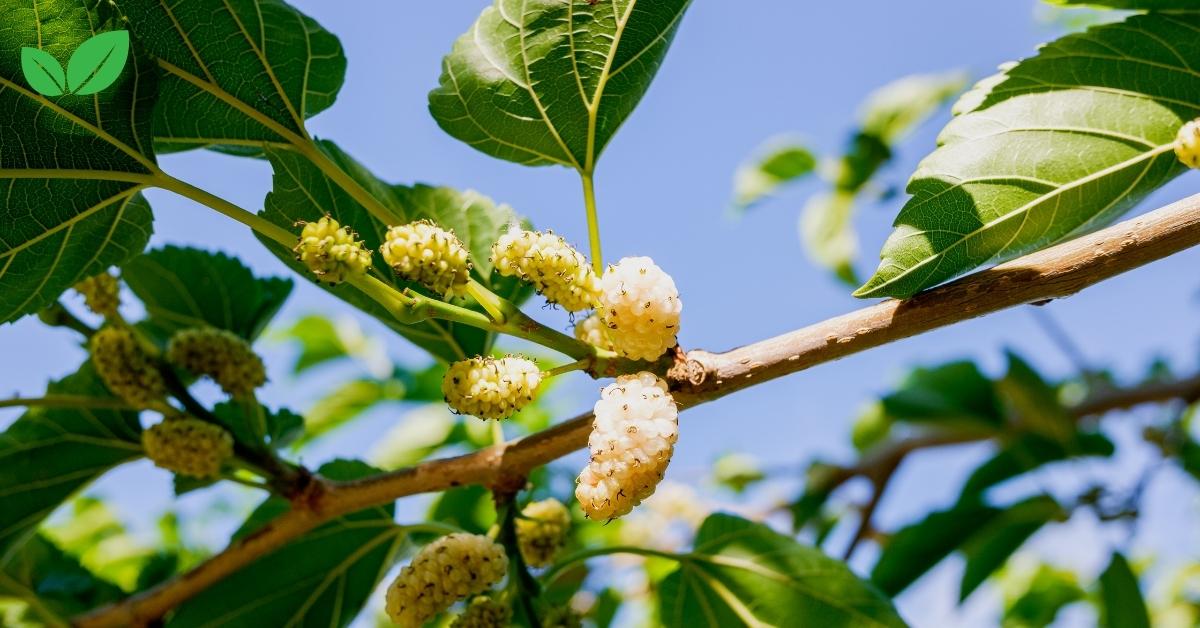Introduction
The white mulberry (Morus alba), native to China, is a fast-growing deciduous tree that has spread across various parts of the world due to its historical significance in silk production and its adaptability to different environments. Widely cultivated for its leaves, which are the primary food source for the silkworm (Bombyx mori), Morus alba has been introduced to many regions, including Europe, North America, and Africa. Its ability to tolerate a wide range of soil and climatic conditions has allowed it to thrive in both urban and rural environments.
While the tree has been celebrated for its uses in sericulture, medicine, and as a food source for both wildlife and humans, the white mulberry has also become an invasive species in some regions, where it outcompetes native plants and alters local ecosystems. Understanding the ecological niche of Morus alba, its environmental significance, and the challenges it poses is crucial for managing its impact in both natural and agricultural landscapes.
This article explores the environmental niche of the white mulberry, its ecological role, benefits and risks in various ecosystems, and the conservation concerns related to its spread. Additionally, it examines the plant’s importance in traditional agriculture, biodiversity, and modern sustainability efforts.
Overview of White Mulberry (Morus alba)
White mulberry Morus alba is a small to medium-sized tree, typically growing 10 to 20 meters tall, with a wide, rounded canopy and distinctive lobed leaves. The tree produces small, unisexual flowers that develop into berry-like fruits, which change color from white to pink or dark purple as they ripen. These fruits are a favorite of birds and other wildlife and are also consumed by humans for their sweet taste.
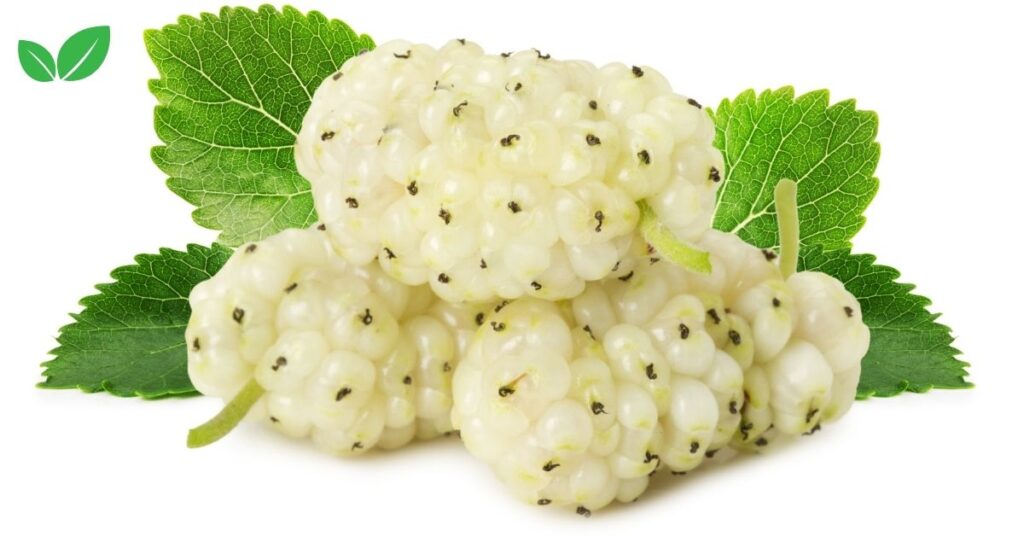
The leaves of Morus alba are known for their high nutritional value, particularly for silkworms, making the tree a cornerstone of sericulture. The tree is hardy, drought-tolerant, and can grow in a variety of soils, including those that are nutrient-poor or highly compacted, making it well-suited for urban environments and disturbed landscapes.
Geographic Distribution
While native to China, Morus alba has been introduced to other parts of Asia, Europe, North America, and Africa. In North America, for example, the tree was first introduced in the 17th century as part of an effort to establish a silk industry. Since then, it has spread across much of the United States, where it is often found in parks, along roadsides, and in other disturbed habitats.
Due to its fast growth and ability to regenerate from cuttings, Morus alba has become naturalized in many areas outside its native range. In some regions, it is considered invasive, particularly in North America, where it has been known to outcompete native species like the red mulberry (Morus rubra).
Ecological Niche of Mulberry Morus alba
The ecological niche of Morus alba is defined by its adaptability to a wide range of environmental conditions, including various soil types, moisture levels, and temperatures. Its ability to thrive in both full sunlight and partial shade makes it a versatile species that can colonize different habitats, from open fields to forest edges.
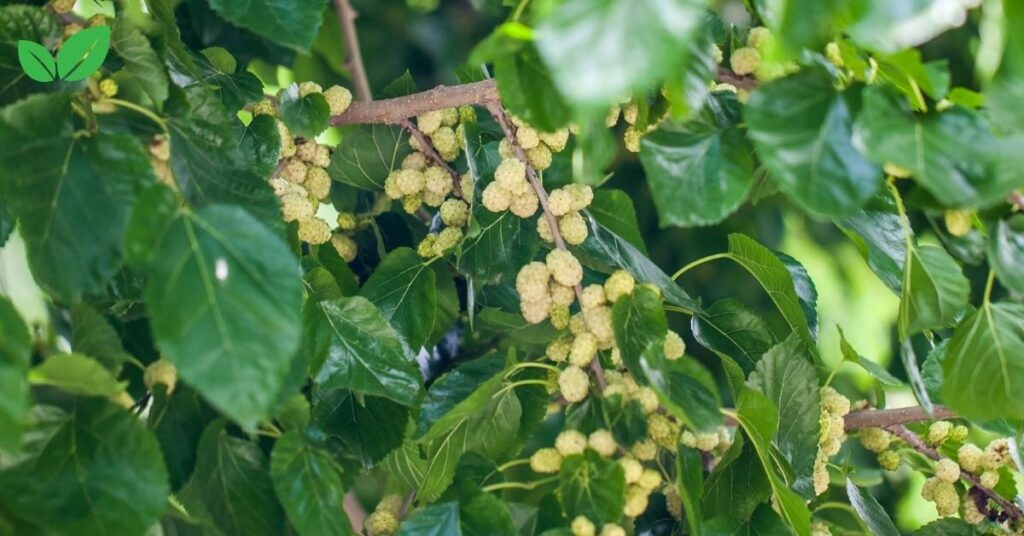
Habitat and Environmental Conditions
Morus alba grows well in temperate to subtropical regions, where it can tolerate a variety of climatic conditions. The tree prefers well-drained soils but can survive in clay, loamy, or sandy soils with moderate fertility. Its drought tolerance and capacity to grow in nutrient-poor soils make it a common species in urban landscapes, where it can be found in parks, gardens, and alongside roads.
In its native habitat, the white mulberry is typically found in riparian zones and forest clearings. However, in regions where it has been introduced, the tree often grows in disturbed habitats such as abandoned agricultural fields, forest edges, and urban environments. Its rapid growth and ability to produce a large number of seeds allow it to quickly colonize new areas.
Reproductive Strategy
White mulberry Morus alba reproduces both sexually, through seeds, and asexually, through root suckers and cuttings. The tree produces large quantities of fruit, which are consumed by birds and other animals, aiding in seed dispersal. The seeds are highly viable, allowing the species to spread rapidly in both natural and disturbed environments.
In addition to seed production, Morus alba is capable of vegetative reproduction through root suckers and cuttings, making it a resilient species that can quickly recover from damage. This reproductive strategy contributes to the tree’s invasive potential, particularly in regions where it has escaped cultivation and established itself in the wild.
Ecological Role and Environmental Impact
Morus alba plays a significant ecological role in its native and introduced environments, providing food and habitat for wildlife, improving soil health, and contributing to carbon sequestration. However, the tree also poses environmental challenges, particularly in regions where it has become invasive.
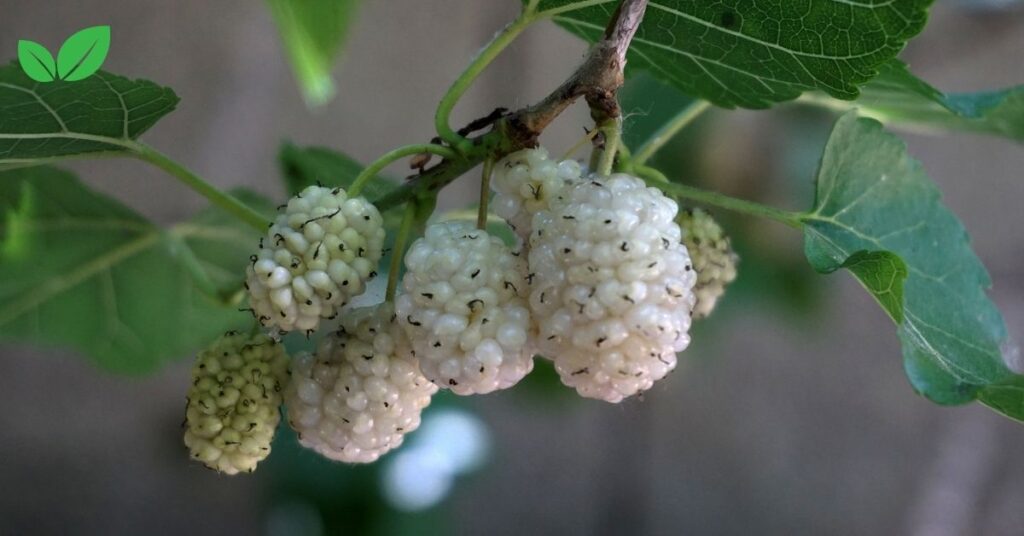
Positive Contributions to Ecosystems
In its native range and managed landscapes, white mulberry provides several ecological benefits. The tree’s leaves, fruit, and flowers support a wide variety of species, from pollinators and herbivores to birds and small mammals. The fruit, in particular, is an important food source for wildlife, including birds, squirrels, and deer, while the leaves are consumed by various insects.
Mulberry Morus alba is also known to improve soil health through its extensive root system, which helps prevent erosion and improve soil structure. The tree’s roots stabilize the soil, reducing the risk of erosion in riparian zones and on slopes. Additionally, the decomposition of fallen leaves adds organic matter to the soil, enhancing nutrient cycling and supporting the growth of other plants.
Invasive Potential and Negative Impact
While Morus alba provides benefits in some environments, its invasive potential has raised concerns in regions where it has been introduced. In North America, for example, the tree has become invasive in many areas, outcompeting native species like the red mulberry (Morus rubra) and altering local ecosystems.
The aggressive growth of Morus alba allows it to quickly dominate disturbed habitats, where it can form dense thickets that crowd out native vegetation. This can reduce biodiversity by limiting the availability of resources for native plants and animals. In addition, hybridization between mulberry Morus alba and the native red mulberry has led to a decline in the genetic integrity of Morus rubra, further threatening its survival.
The invasive nature of Morus alba is particularly concerning in riparian zones and forest edges, where it can displace native species and disrupt ecosystem processes. The tree’s rapid spread and ability to regenerate from root suckers make it difficult to control once established, and efforts to manage its spread often require intensive intervention.
Importance in Traditional Agriculture and Sustainability
Despite its invasive potential, mulberry Morus alba has been a valuable species in agriculture, particularly in traditional silk production. The tree’s leaves are the primary food source for silkworms (Bombyx mori), making it an essential component of sericulture. In addition to its role in silk production, Morus alba has been used for its medicinal properties, timber, and fruit.
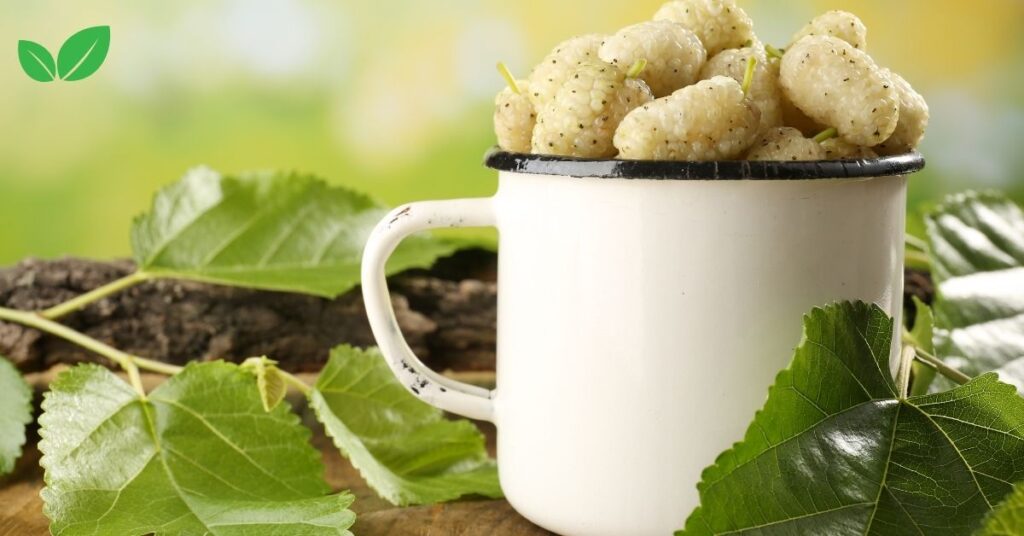
Role in Sericulture
The white mulberry has been cultivated for thousands of years for its leaves, which are essential to the silk industry. In China, where the tree is native, the cultivation of Morus alba and the rearing of silkworms have been practiced since ancient times, with silk becoming a major export product. The tree’s leaves are the primary food source for silkworms, and their high nutritional content ensures the healthy development of the insects.
The establishment of mulberry plantations for sericulture has also contributed to the development of sustainable agricultural practices. In many regions, mulberry trees are integrated into agroforestry systems, where they are grown alongside other crops to enhance biodiversity, improve soil health, and provide additional sources of income for farmers.
Medicinal Uses and Nutritional Benefits
In addition to its role in sericulture, mulberry Morus alba has been used in traditional medicine for its wide range of health benefits. The leaves, fruit, bark, and roots of the tree contain bioactive compounds, including flavonoids, alkaloids, and polyphenols, which have been used to treat conditions such as diabetes, high blood pressure, and inflammation.
The fruit of Morus alba is rich in vitamins and minerals, including vitamin C, potassium, and calcium. It is consumed fresh, dried, or processed into jams, juices, and wines. The nutritional value of the fruit has made it a popular ingredient in traditional diets, particularly in regions where the tree is cultivated.
Conservation and Management Challenges
Managing the spread of mulberry Morus alba in regions where it has become invasive is a significant conservation challenge. Efforts to control the species often involve a combination of mechanical, chemical, and biological methods, as well as public awareness campaigns to prevent further spread.

Mechanical and Chemical Control
In regions where mulberry Morus alba has become invasive, mechanical control methods such as cutting, mowing, and uprooting are commonly used to remove the tree from affected areas. However, due to the tree’s ability to regenerate from root suckers, repeated treatments are often necessary to prevent regrowth.
Chemical control methods, including the application of herbicides, are also used to manage the spread of Morus alba. These methods can be effective in preventing the tree from reestablishing itself in cleared areas, but they must be carefully managed to avoid harming non-target species and ecosystems.
Biological Control and Hybridization
In some regions, biological control methods are being explored as a way to manage the spread of Morus alba. These methods involve the introduction of natural predators or pathogens that specifically target the tree, helping to reduce its population without the need for chemical intervention. As mulberry Morus alba is closely related to native mulberry species, particularly the red mulberry (Morus rubra), there is a risk that biological control measures could impact non-invasive or endangered species.
Hybridization between mulberry Morus alba and Morus rubra poses a significant threat to the genetic integrity of native mulberry species. In areas where the two species overlap, hybridization can result in the loss of pure Morus rubra populations, leading to a decline in genetic diversity. This process, known as genetic swamping, further exacerbates the conservation challenges facing native mulberry species. Conservation efforts aimed at preserving Morus rubra populations often focus on isolating pure populations from Morus alba and preventing hybridization through targeted removal of invasive trees.
Public Awareness and Prevention
Public awareness campaigns play a crucial role in managing the spread of Morus alba. In regions where the tree is invasive, educating landowners, gardeners, and farmers about the risks associated with planting and cultivating Morus alba is essential for preventing further introductions. In some areas, local governments and environmental organizations have implemented regulations that restrict the sale and planting of Morus alba, particularly in ecologically sensitive areas.
Encouraging the use of native or non-invasive species as alternatives to Morus alba is another important strategy in preventing its spread. For example, in North America, the promotion of native tree species like Morus rubra or other fruit-bearing trees that do not pose the same ecological risks can help reduce the demand for Morus alba in landscaping and agricultural settings.
Restoration of Native Habitats
Restoring native habitats that have been impacted by Morus alba invasions is a key component of conservation efforts. In many cases, the removal of Morus alba must be followed by the replanting of native species to prevent the tree from recolonizing the area. Native plant species that are well-adapted to local conditions can help restore biodiversity, improve soil health, and provide habitat for wildlife.
Restoration projects often involve collaboration between local communities, environmental organizations, and government agencies. These efforts can include the creation of seed banks for native species, the establishment of protected areas where Morus alba is actively managed, and the promotion of sustainable land-use practices that reduce the likelihood of invasive species establishing themselves in the future.
The Future of White Mulberry Morus alba: Balancing Benefits and Challenges
The white mulberry Morus alba presents both opportunities and challenges in terms of its environmental impact and ecological role. While the tree is valued for its contributions to sericulture, agriculture, and traditional medicine, its invasive potential in non-native regions cannot be overlooked. The key to managing Morus alba lies in balancing its benefits with the need for careful management to prevent environmental degradation and the loss of native biodiversity.
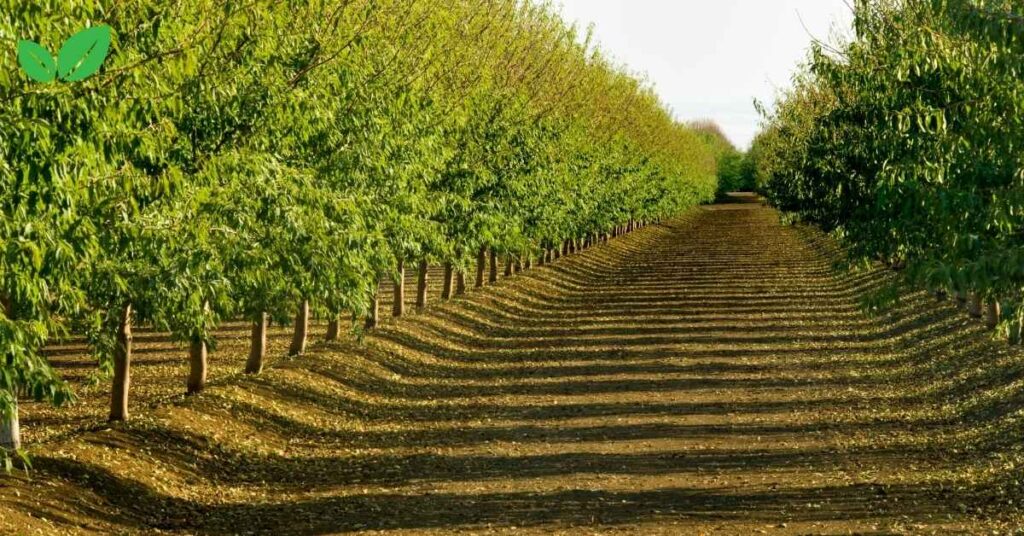
Research and Innovation in Mulberry Management
Ongoing research into the ecological impact of Morus alba and the development of new management strategies will be crucial for addressing the challenges associated with its spread. Scientists are studying the genetic differences between Morus alba and native mulberry species to better understand the hybridization process and develop methods to preserve native populations. In addition, advances in biological control and habitat restoration techniques offer promising solutions for managing invasive mulberry populations in affected regions.
Innovative approaches to sustainable farming and agroforestry are also helping to integrate Morus alba into environmentally friendly agricultural systems. In regions where the tree is cultivated for its leaves, fruit, or timber, farmers are adopting practices that enhance biodiversity, improve soil health, and reduce the environmental impact of mulberry farming.
Promoting Sustainable Uses of Mulberry Morus alba
In regions where Morus alba is not invasive, promoting its sustainable cultivation can offer economic and environmental benefits. The tree’s ability to grow in poor soils and its resistance to drought make it a valuable species for reforestation and land reclamation projects. By integrating Morus alba into agroforestry systems, farmers can diversify their income streams while contributing to carbon sequestration and biodiversity conservation.
In addition, the medicinal and nutritional properties of Morus alba make it a valuable resource for communities around the world. The development of new products derived from the tree’s fruit, leaves, and bark can provide economic opportunities for small-scale farmers while supporting public health initiatives.
Climate Change and Mulberry Adaptability
The adaptability of Morus alba to a wide range of environmental conditions may make it a valuable species in the context of climate change. As temperatures rise and rainfall patterns become more erratic, the ability of Morus alba to tolerate drought, poor soils, and urban environments could make it an important tool for urban greening, reforestation, and agricultural adaptation.
However, the potential for Morus alba to become invasive in new regions as climate zones shift underscores the need for careful monitoring and management. Invasive species often thrive in disturbed or changing environments, and the spread of Morus alba into new areas could exacerbate existing environmental challenges. As such, any efforts to promote the use of Morus alba in climate adaptation strategies must be accompanied by rigorous environmental assessments and management plans.
Conclusion
White mulberry Morus alba is a species with a complex environmental profile. While it has long been valued for its role in silk production, traditional medicine, and agriculture, its invasive potential in non-native regions poses significant ecological challenges. The tree’s ability to outcompete native species, alter ecosystems, and hybridize with native mulberries has made it a focus of conservation efforts in many parts of the world.
Balancing the benefits of mulberry Morus alba with the need to protect native biodiversity and manage invasive populations will require a combination of research, public awareness, and innovative management strategies. In regions where the tree is cultivated for its leaves, fruit, or timber, promoting sustainable farming practices and integrating Morus alba into agroforestry systems can provide economic and environmental benefits. However, in areas where the tree poses a threat to native ecosystems, efforts to control its spread and restore native habitats will be critical for preserving biodiversity and maintaining ecosystem health.
Ultimately, the future of Morus alba will depend on our ability to manage its impact on the environment while continuing to explore its potential uses in sustainable agriculture, medicine, and climate resilience. Through thoughtful management and conservation, we can ensure that the benefits of Morus alba are realized without compromising the health of our natural ecosystems.
Read More: Pulasan: The Tropical Superfruit That Supports Biodiversity and the Environment

